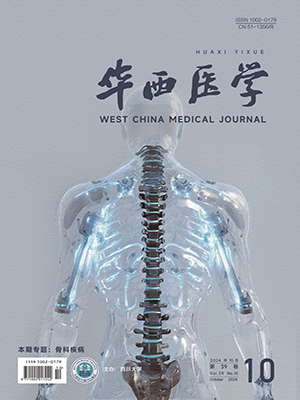| 1. |
Marcondes MC, Furtado GC, Wensky A, et al. Immune regulatory mechanisms influence early pathology in spinal cord injury and in spontaneous autoimmune encephalomyelitis[J]. Am J Pathol, 2005, 166(6): 1749–1760.
|
| 2. |
Serpe CJ, Kohm AP, Huppenbauer CB, et al. Exacerbation of facial motoneuron loss after facial nerve transection in severe combined immunodeficient (scid) mice[J]. J Neurosci, 1999, 19(11): 7.
|
| 3. |
Serpe CJ, Sanders VM, Jones KJ. Kinetics of facial motoneuron loss following facial nerve transection in severe combined immunodeficient mice[J]. J Neurosci Res, 2000, 62(2):273-278.
|
| 4. |
Besser M, Wank R. Cutting edge: clonally restricted production of the neurotrophins brain-derived neurotrophic factor and neurotrophin-3 mRNA by human immune cells and Th1/Th3-polarized expression of their receptors[J]. J Immunol, 1999, 163(11): 6303-6306.
|
| 5. |
Serpe CJ, Byram SC, Sanders VM, et al. Brain-derived neurotrophic factor supports facial motoneuron survival after facial nerve transection in immunodeficient mice[J]. Brain Behav Immun, 2005, 19(2): 173-180.
|
| 6. |
Jones KJ, Serpe CJ, Byram, SC, et al. Role of the immune system in the maintenance of mouse facial motoneuron viability after nerve injury[J]. Brain Behav Immun, 2005, 19(1): 12-19.
|
| 7. |
Marzo SJ, Moeller CW, Sharma N, et al. Facial motor nuclei cell loss with intratemporal facial nerve crush injuries in rats[J]. Laryngoscope, 2010, 120(11): 2264-2269.
|
| 8. |
Canh MY, Serpe CJ, Sanders V, Jones KJ. CD4+ T cell-mediated facial motoneuron survival after injury: Distribution pattern of cell death and rescue throughout the extent of the facial motor nucleus[J]. J Neuroimmune, 2006, 181(1-2): 93-99.
|
| 9. |
Mesnard NA, Alexander TD, Sanders VM, et al. Use of laser microdissection in the investigation of facial motoneuron and neuropil molecular phenotypes after peripheral axotomy[J]. Exp Neurol, 2010, 225(1): 94-103.
|
| 10. |
Serpe CJ, Coers S, Sanders VM, et al. CD4+ T, but not CD8+ or B, lymphocytes mediate facial motoneuron survival after facial nerve transection[J]. Brain Rehav Immun, 2003, 17(5): 393-402.
|
| 11. |
Kaplan MH, Schindler U, Smiley ST, et al. Stat6 is required for mediating responses to IL-4 and for development of Th2 cells[J]. Immunity, 1996, 4(3): 313-319.
|
| 12. |
Deboy CA, Xin J, Byram SC, et al. Immune-mediated neuroprotection of axotomized mouse facial motoneurons is dependent on the IL-4/STATE signaling pathway in CD4+ T cells[J]. Exp Neurol, 2006, 201(1): 212-224.
|
| 13. |
Xin J, Wainwright DA, Serpe CJ, et al. Phenotype of CD4+ T cell subsets that develop following mouse facial nerve axotomy[J]. Brain Behav Immun, 2008, 22(4): 528-37.
|
| 14. |
Wainwright DA, Mesnard NA, Xin J, et al. Effects of facial nerve axotomy on Th2-associated and Th1-associated chemokine mRNA expression in the facial motor nucleus of wild-type and presymptomatic SOD1 mice[J]. J Neurodegener Regen, 2009, 2(1): 39-44.
|
| 15. |
Wainwright DA, Xin J, Mesnard NA, et al. Toll-like receptor 2 and facial motoneuron survival after facial nerve axotomy[J]. Neurosci Lett, 2010, 471(1): 10-14.
|
| 16. |
Byram SC, Carson MJ, DeBoy CA, et al. CD4+ T cell-mediated neuroprotection requires dual compartment antigen presentation[J]. J Neurosci, 2004, 18(18): 4333-4339.
|
| 17. |
Aloisi F, Ria F, Adorini L. Regulation of T-cell responses by CNS antigen-presenting cells: different roles for microglia and astrocytes[J]. Immunol Today, 2000, 21(3): 141-147.
|
| 18. |
Becher B, Prat A, Antel JP. Brain-immune connection: immuno-regulatory properties of CNS-resident cells[J]. Glia, 2000, 29(4): 293-304.
|
| 19. |
Zhi Huang, Grace K Ha, John M, et al. IL-15 and IL-15Ra gene deletion: Effects on T lymphocyte trafficking and the microglial and neuronal responses to facial nerve axotomy[J]. Neurosci Lett, 2007, 417(2): 160-164.
|
| 20. |
Xin J, Wainwright DA, Mesnard NA, et al. IL-10 within the CNS is necessary for CD4(+) T cells to mediate neuroprotection[J]. Brain Behav Immun, 2011, 25(5): 820-829.
|
| 21. |
Byram SC, Serpe CJ, Pruett SB, et al. Natural killer cells do not mediate facial motoneuron survival after facial nerve transection[J]. Brain Behav Immun, 2003, 17(6): 417-425.
|




